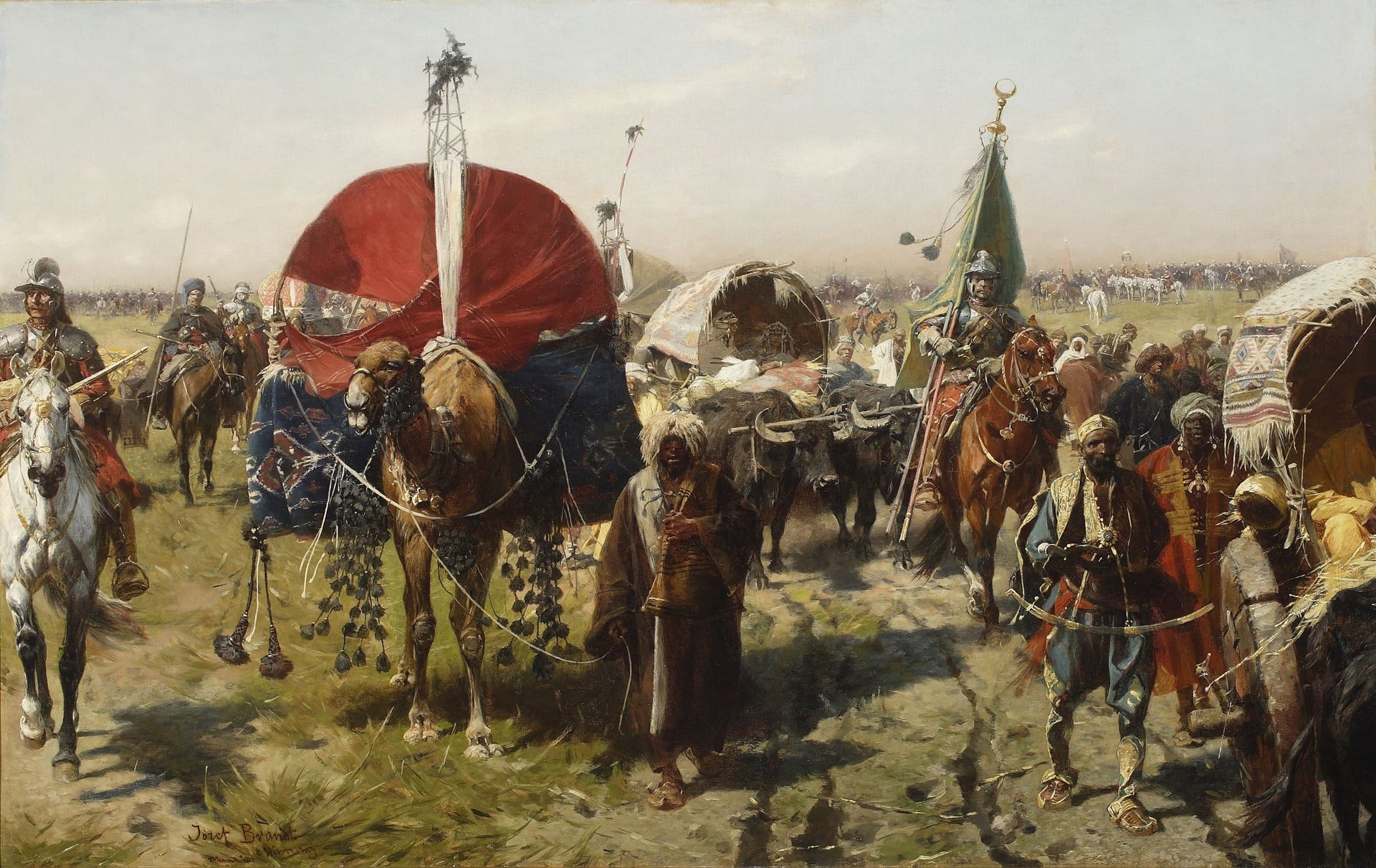Throughout the ages, the Orient has attracted the interest of the West. European intellectual and artists have been mesmerized since the earliest times by this presumably mysterious and relatively closed world. As a natural consequence, during various periods many artists, either by travelling themselves or by travelling in their imaginations, sought to discover the essence of the Orient, and depicted or expressed in their works either the real Orient or their own visions of it.
The movement known as Orientalism in European art, which appeared in conjunction with the Romanticist movement of the 19th century, focused on the East, primarily in the lands of the Ottoman Empire. Even long before the rise of Orientalism in European art, many European artists, fascinated by their first glimpses of the mysterious East and by the Turquerie fashion which was the result of the new relations with the Ottoman world. For nearly two hundred years, starting from the 18th century, numbers of painters, some of whom became known as the Bosphorus Painters, worked intensively in the lands of the Empire and depicted the Ottoman world and its various aspects, consequently engraving those images in mankind's visual memory.
The exhibition Portraits from the Empire sheds light on a special part of this opulent world. Almost sixty paintings selected from the Suna and İnan Kıraç and Sevgi and Erdoğan Gönül collections bring us face to face with the peoples of the Ottoman world, their portraits and portrayals, sometimes very familiar and sometimes remote, even nearly foreign, in their physiognomies. These paintings, most of them created before the eye of the camera replaced the human eye, in the times when observing, studying, interpreting and depicting the world was the priority of painters, present the lost faces of an era long past with amazing reality and vividness.
Exhibition Catalogue

The movement known as Orientalism in European art, which appeared in conjunction with the Romanticist movement of the 19th century, focused on the East, primarily in the lands of the Ottoman...

Józef Brandt harboured a fascination for the history of 17th century Poland, and his favourite themes included ballistic scenes and genre scenes before and after the battle proper –all and sundry marches, returns, supply trains, billets and encampments, patrols, and similar motifs illustrating the drudgery of warfare outside of its culminating moments.
Tuesday - Saturday 10:00 - 19:00
Friday 10:00 - 22:00
Sunday 12:00 - 18:00
The museum is closed on Mondays.
On Wednesdays, the students can
visit the museum free of admission.
Full ticket: 300 TL
Discounted: 150 TL
Groups: 200 TL (minimum 10 people)